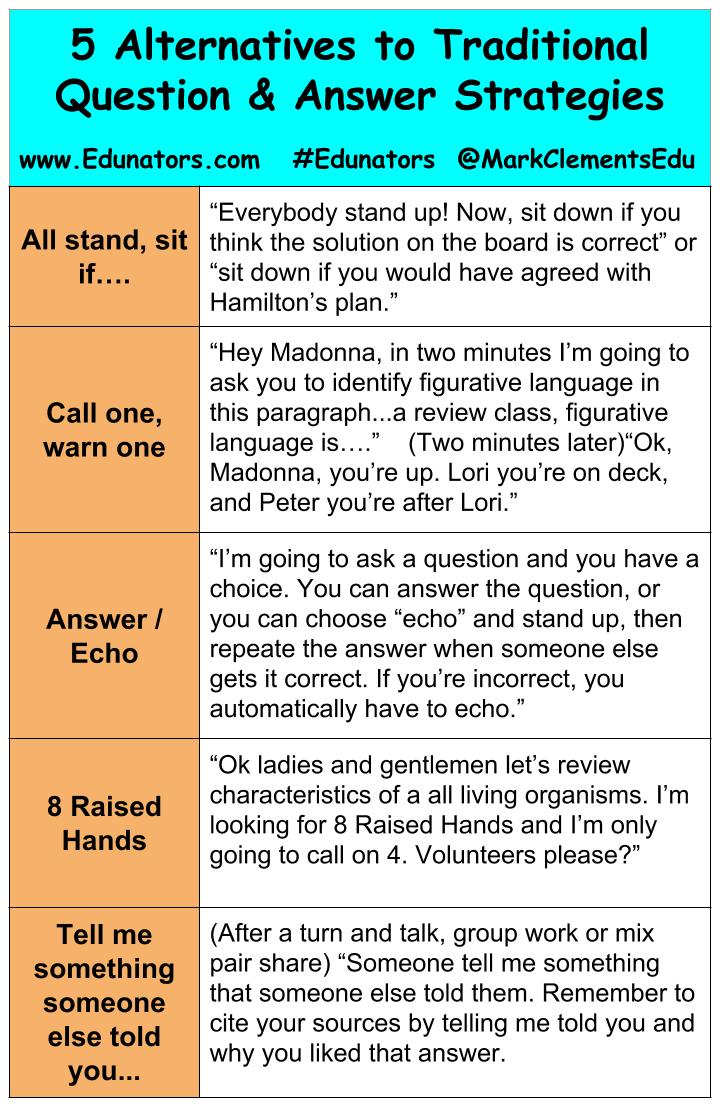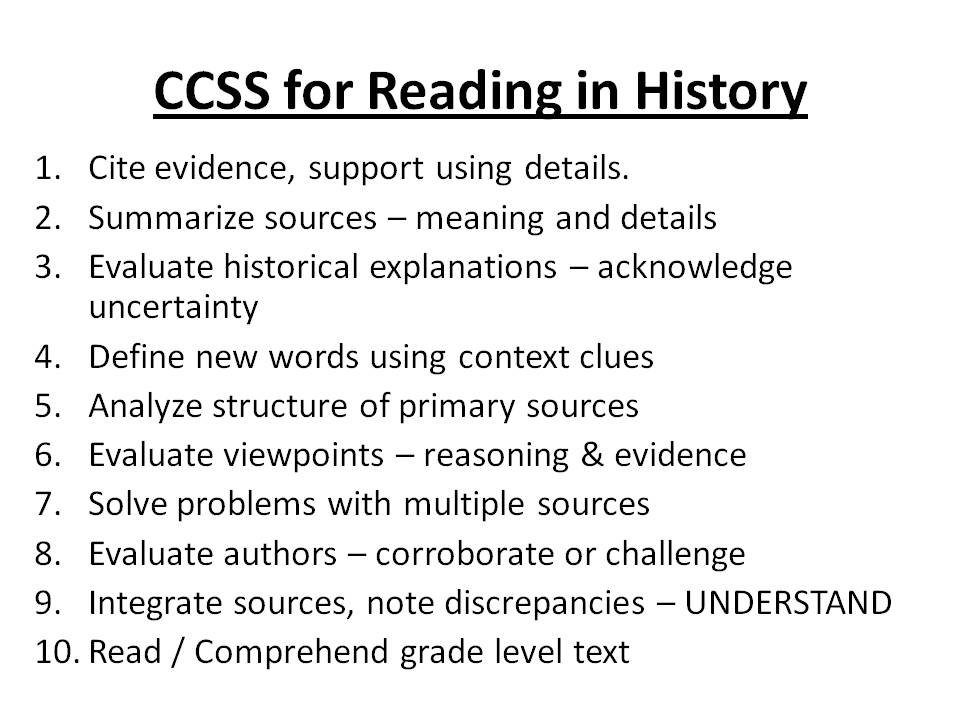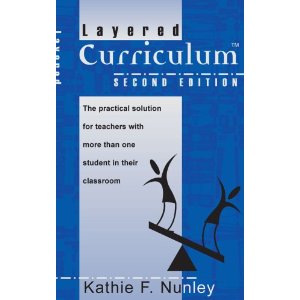
Tired of the same 3-4 kids always raising their hands to answer questions in class? Want to get a few more (or even all!) students involved in answering questions? Try some of these and let us know how they go!
1. All stand, sit if….
Example: “Everybody stand up! Now, sit down if you think the solution on the board is correct” or “sit down if you would have agreed with Hamilton’s plan.”
Pros: I love doing this when the students desperately need to move, and they almost always do. No complicated directions, just a chance to stand up

Over the past year I’ve had the great privilege of presenting my ideas regarding the implementation of the new Common Core State Standards in Secondary Social Studies classrooms for the Bureau of Education and Research (Click here if you'd like to read the workshop description on the BER website). I took on the challenge of sharing this work with others because, frankly, I new it would incentivize me as a classroom teacher to dive in head over heels myself. I didn’t want somebody else telling me what the Common Core meant to me as a Middle School History teacher, I

As you may have read elsewhere or heard me speak about in person, Dr. Kathie Nunley’s Layered Curriculum® without a doubt saved my teaching career. The shortest workshop I’ve ever seen on Layered Curriculum is three-hours and most often it is taught as either a full day, two day, or multi-day “academy” so trying to explain it completely in a blog post may not do it justice. However, here it goes.
What is Layered Curriculum?
Layered Curriculum is essentially a method of differentiating your classroom to fit the wide range of learning styles and mixed ability levels a teacher might find
If you’ve read my piece on using Eminem and Wikipedia to teach students about research papers, than you know I’m always looking for a fun, creative way to drive home some essential points about non-fiction writing in my classroom. Several years ago, when our school began our C.S.I. project, I stumbled across another neat trick while preparing some young, aspiring attorney’s for an upcoming mock trial.
It turns out, many of the rules of the courtroom that I was asking my lawyers to abide by apply equally to the research projects I’d been asking them write all year. After all,

“Raise your hand if you believe that social promotion is the problem with education in this country and should be stopped immediately?”
I reluctantly started to raise my hand, as did about a hundred or so other teachers in the room.
“Then why do we do it every 47 minutes every time a bell rings? DING! And students move to the next class on their schedule whether they learned the days objective or not, whether they did the assignment to the best of their ability or ignored it completely. We promote them.”
And with that, a light bulb went off

A little over a year ago, I was sitting at the Association for Middle Level Education’s 38th Annual National Conference for Middle Level Educators in Louisville, KY. It was a sensational conference that I recommend any Middle School Teacher try and go to as often as they can in their education career.
While there, I was sitting in a breakout session where the presenters were explaining their master schedule and some innovations they’d made regarding their intervention and enrichment programs and how they’d been able to turn things around in their school pretty quickly using a variety of strategies. One

I was walking down the hallway of school one day, sort of half-humming and half-singing a song that had been stuck in my head all morning. A 7th grade student I don’t know (I teach 8th Grade) stopped me in the hallway and said “Hey! That’s Eminem! You can’t sing that! You’re too old!”
I chuckled to hide my bruised self-esteem before explaining to the young lady that the song “Lose Yourself” came out my freshman year of college and that Eminem is older than I am.
She of course didn’t believe me so I gave her the classic teacher
Differentiated Instruction is a popular buzzword in many education circles, and while some teachers pass it off as “chaotic” or “too much work” the true Edunators amongst us have learned how to embrace this as one of the essential Weapons of Mass Education.
While many teachers use Differentiated Instruction to provide more targeted instruction where kids need it most, usually after some bit of formative assessment, it can also be used as means of delivering initial instruction. There are essentially three ways in which teachers can easily differentiate instruction, give them a once over and see if there’s anyway you
